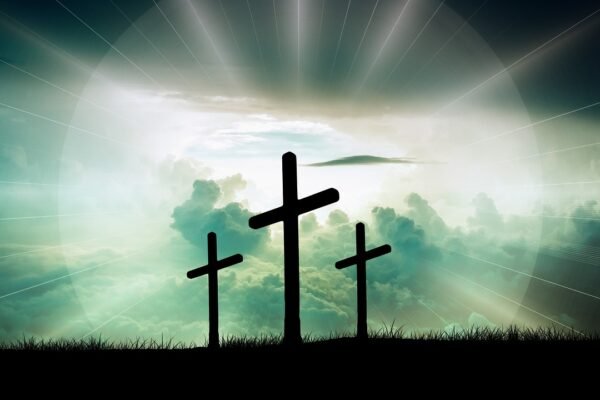“What is your calling?” If we were visiting over tea, what would your gut response be? Would you think for a while before answering, or would the words drip freely from your mouth?
Embedded within humanity is this deep-felt desire to not only know that our lives have meaning but also experience the peace of mind that we are indeed living out that meaning. However, we often ask the wrong questions, and thus, arrive at incomplete answers.
Human Calling
Asking the right questions begins with getting outside ourselves to embrace not our personal uniqueness, but rather the uniqueness of humanity and then become enamored with the collective goal of humanity. To be sure, the inhabitants of this planet clearly have no allegiance to a collective goal. However, this doesn’t mean that the goal does not exist. It just means that we have to search for it.
In Genesis 2 we find the first representatives of humanity entering into a partnership with the Creator. In the midst of creation, God had designed a paradisiacal garden that functioned as His temple. A place where heaven met earth. He made His presence tangibly known in this place, and the first man and woman served as His priests. How they cared for the temple-garden reflected how God cared for it Himself.
However, unlike a temple made of stones, this temple was designed to expand. Paradise would not always be confined to this area among four rivers. As humanity increased in number, the garden would expand until it filled the entire earth. That is, until all of earth became a temple of God, where all of earth was caught up in heaven to serve as a place where God would be “at home.” God planned from the beginning to partner with humans to literally bless the whole earth. But they didn’t know how the plan would work.
Image-bearing Mission
The notion of calling is also inextricably wrapped up in the word vocation. From the root word vocare (Latin: “to call”), vocation embodies this sense of action related to a call. If humanity’s call is to partner with God to bless the entire earth, the action associated with this call is to interact with the world as God does.
We tend to relegate the term image of God to physical appearance that represents a reflection of an invisible God. Yet humans were not designed as inanimate statues in the temple of an inactionable God. In his book You Are What You Love, James K. A. Smith asserts, “The ‘image of God’ (imago Dei) is not some de facto property of homo sapiens . . . rather, the image of God is a task, a mission.”
[bctt tweet=”The ‘image of God’ is not some de facto property of homo sapiens, rather, the image of God is a task, a mission. – James K. A. Smith”]
This action of imaging God is what N. T. Wright refers to in The Day the Revolution Began as the covenant of vocation:
The vocation . . . is that of being a genuine human being, with genuinely human tasks to perform as part of the Creator’s purpose for [His] world. The main task of this vocation is “image-bearing,” reflecting the Creator’s wise stewardship into the world and reflecting the praises of all creation back to its maker.
The story of humanity is our collective rejection of this vocation and with it, a refusal to partner with God in His vision to bless the entire earth with His manifest presence. The story of the Bible is the account of how 1) God is faithful to His original intent that all of earth will become His dwelling place and 2) He is committed to bless the earth by partnering with humanity in the rule of creation.
Covenant Renewed
Consider the covenant God made with Abraham. This man and his descendants would take possession of a sanctified space of earth. There they were to faithfully follow God so that “all peoples on earth will be blessed through you” (Genesis 12:3). This agreement was a renewal of the covenant of the vocation of image bearing.
As Moses prepared to lead the Israelites into this promised land of blessing, where “milk and honey flowed,” God once again renewed this covenant with this branch of Abraham’s descendants. As they reflected God’s rule of and reign in that space, all who came into contact with this reign would be blessed.
Covenantal Law as a Schoolmaster
However, the Israelites demonstrated on their trek to Sinai that they did not know how to do this. Instead of mirroring God’s faithfulness, they argued, complained, and exhausted Moses with personal disputes. Galatians says that God had to give them a covenantal law as a schoolmaster. This provided a structure by which they would learn how to love God and one another. Thus, they could act out their covenant with God to bless the whole earth. However, it is one thing to desire to do what is good and something else to physically carry out that desire.
What makes Jesus’ new covenant with humanity so revolutionary is that as the image of God, He imaged God perfectly (Colossians 1:15). Not only did He show us how to image God in a way the written law could not, He also gave us the Holy Spirit to enable us to live out that covenant of vocation that He called humanity to in the very beginning. In doing so, God made our bodies the new temple — the new place where heaven meets earth. As the earth comes into contact with the rule of Christ in our lives, people will indeed be blessed.
[bctt tweet=”As the earth comes into contact with the rule of Christ in our lives, people will indeed be blessed. – Amber Riggs”]
Personal calling
So, what is your calling? It is to embrace your influence, great or small, to reflect Christ’s life within you to wherever you are at any moment, with whatever gifts God has given you, bringing glory to God as it was in the beginning, is now, and ever shall be, world without end. Amen.
A version of this article was published here.
Here are some additional resources to help you embrace your leadership calling:
- Read Why Jesus Followers Should See Themselves as Leaders.
- Watch The Artios Leadership Conversation: What is a Leader?
- Download Artios’ free guide to Discovering your Leadership Strengths.
- Register for Artios’ introductory course: Essentials of Vibrant Leadership (LEA 111).








